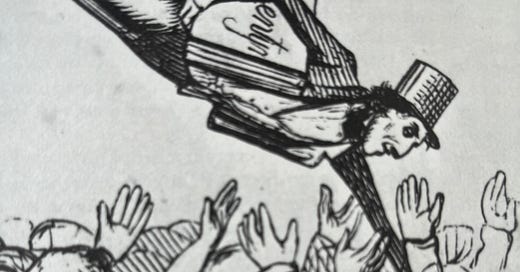Kierkegaard’s understanding of his own emerging literary vocation led him not to hold back when pointing out what he saw as the flaws in the novel. He dismissed its hero Christian as ‘snivelling’ because of his passivity and sexual ambiguity. Kierkegaard insisted a genius should possess courage, resilience and a world view. He condemned Andersen for producing a character who was meant to be a genius and yet displayed timidity, a lack of masculinity who was like a flame extinguished by the slightest breeze. Recent biographers of both writers have insisted that such strictures stung Andersen so much because of his deep sexual confusion and precariously sense of self.
Andersen had one more public dig at Kierkegaard in a play performed in 1840, in which a misanthropic theatrical hairdresser lectures all and sundry with unintelligible thoughts on the meaning of life, and from then onwards their relationship descended into one of cold politeness.
But behind this spat between two eminent Danes is a story not only of a clash of personalities, or a conflict of viewpoints, but some surprising parallels. Both writers swam in the same religious and cultural waters and naturally their lives and art shared experiences and concerns.
To begin with both seem to have made a fairytale out of their childhoods…




